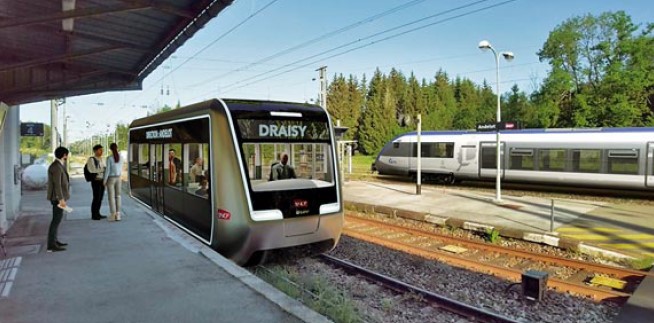By Reinhard Christeller
With decree 2022-664, the French government has created the legal basis for derogating from European interoperability rules on railway lines used exclusively for local passenger transport or for passenger and freight transport. In this case, it is necessary to prove at least the same level of safety according to the “globally at least equivalent” (GAME) principle. This allows for innovative and, above all, user-friendly and low-cost solutions, which are being developed as part of the strategy to accelerate the digitisation and decarbonisation of transport. The decree simply sets out the framework, but does not impose any specific requirements, so that the greatest possible freedom is guaranteed for the various developments. This means that solutions such as those implemented in Germany under the LNT (“Leichte Nahverkehrstriebwagen”) directive will also be possible in France.
(…)
In this episode, we present one of the two projects, both under the aegis of the SNCF, with a series of partners. Within the SNCF Group’s Department of Technologies, Innovation and Projects, the ‘Draisy’ project is led by the Department of Innovation Programmes and Emerging Mobility, while the ‘Innovative Light Train’ project, as part of an entity called ‘Tech4Rail’, comes under the Rail System Innovation Programmes Department and will be described in the next episode. For Draisy, there is a consortium led by SNCF, which is responsible for legal issues, operations and traffic, testing and certification of the system, as well as the infrastructure, driver’s cab and vehicle interiors. Lohr Industrie is involved as the designer of the rolling stock, GCK Battery for the batteries, while Stations-e is in charge of the rapid charging system on the platforms. The Railenium technology research institute is also involved in man-machine interfaces and system safety.
With Draisy, the consortium has set itself the ambitious target of developing by 2027 a rail transport system ready for series production for the 200 or so secondary lines totalling more than 9,000 km, and possibly also for some of the additional 5,700 km of lines that are no longer in service today. A frugal approach that should make it possible to reduce costs per train-kilometre produced by around 60%. To achieve this, radical savings must be made on infrastructure, rolling stock, operations and maintenance. How can this be achieved?
 English
English
 Français
Français
 Deutsch
Deutsch
 Español
Español
 Русский
Русский
